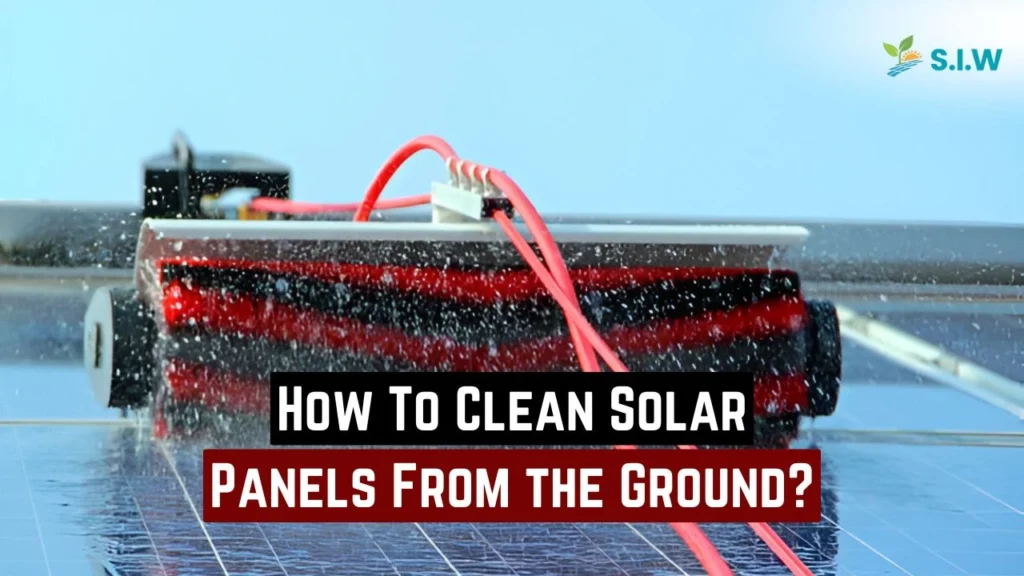Solar panels are a critical investment for maximizing renewable energy efficiency. To maintain peak performance, regular cleaning is essential. Cleaning solar panels from the ground is not only safer but also reduces the risk of damaging the panels. Below, we provide a comprehensive guide on how to clean your solar panels from the ground effectively.
Why Regular Solar Panel Cleaning is Important
Over time, dust, dirt, bird droppings, and debris accumulate on solar panels, reducing their efficiency. This layer of grime can block sunlight, preventing the panels from generating optimal energy. Cleaning the panels regularly ensures that you maintain their performance and extend their lifespan.
Tools Required for Ground Cleaning
Before starting the cleaning process, ensure you have the following equipment:
- Water-fed telescopic pole: Allows you to reach the panels without climbing.
- Soft-bristle brush or sponge: Gentle on the solar panel surface.
- Hose with deionized water or distilled water: To avoid mineral spots on the panels.
- Biodegradable cleaning solution (if necessary): For stubborn grime.
Tip: Avoid abrasive materials or harsh chemicals, as they can scratch or damage the solar panel’s surface.
Step-by-Step Guide to Cleaning Solar Panels from the Ground
1. Turn Off the Solar Power System
Before cleaning, it is crucial to turn off the solar power system to prevent any risk of electric shock or damage. Follow the manufacturer’s instructions to safely shut down the system.
2. Assess the Condition of the Panels
Inspect the solar panels from the ground using a pair of binoculars to identify any visible dirt, bird droppings, or buildup. This step helps you determine the level of cleaning required and identify if certain areas need more attention.
3. Choose the Right Weather Conditions
For optimal results, clean your panels during early morning or late evening. This is when the panels are cool, reducing the chances of the water evaporating quickly and leaving behind streaks or spots. Cloudy days are also ideal for cleaning.
4. Spray the Panels with Water
Attach a hose with a soft water setting to the telescopic pole. Start by rinsing the panels with deionized or distilled water to loosen the dirt and grime. Avoid using high-pressure washers, as they can damage the panels or void warranties.
5. Use the Soft-Bristle Brush for Gentle Scrubbing
Once the panels are wet, use the soft-bristle brush attached to the telescopic pole to scrub away the dirt and debris. Be sure to apply light pressure to prevent scratching the glass surface. If needed, you can use a biodegradable cleaning solution diluted with water, but most dirt will wash away with plain water.
6. Rinse Thoroughly
After scrubbing, rinse the panels thoroughly with clean, deionized water to remove any remaining dirt or soap residue. This step is essential to avoid water spots that can further reduce panel efficiency.
7. Drying the Panels
In most cases, letting the panels air dry is sufficient, as deionized water doesn’t leave streaks or mineral deposits. However, if streaks appear, use a squeegee attachment on your telescopic pole to remove excess water.
Safety Tips for Ground-Level Solar Panel Cleaning
- Stay Grounded: Avoid using ladders or climbing onto the roof, as this increases the risk of injury.
- Avoid Electrical Components: Do not spray water directly on electrical junction boxes or wiring.
- Work in Pairs: It’s safer to clean panels with a second person who can monitor for safety hazards.
How Often Should Solar Panels Be Cleaned?
The frequency of cleaning depends on several factors, such as the location of your panels and the weather conditions. In areas with high pollution, dust, or frequent bird activity, panels may need cleaning every 3 to 6 months. For others, an annual cleaning may suffice.
Benefits of Using Deionized Water for Cleaning
Using deionized water is highly recommended for cleaning solar panels. This water type removes impurities and minerals that could leave streaks or hard water spots. The absence of these residues ensures a spotless and streak-free finish, enhancing the overall efficiency of the solar panels.
Automated Solar Panel Cleaning Systems
For those looking for a hands-free cleaning solution, consider installing an automated solar panel cleaning system. These systems typically consist of robotic cleaners or sprinkler systems that use deionized water to clean the panels regularly. While they may involve a higher upfront cost, they can save time and effort in the long run.
Common Mistakes to Avoid
- Using tap water: Tap water often contains minerals that can leave deposits on the panels.
- High-pressure washing: The force of high-pressure water can damage solar panel surfaces or loosen seals.
- Cleaning during the midday sun: Hot panels can crack if cooled too quickly, and water may evaporate too fast, leaving streaks.
Final Thoughts
Maintaining clean solar panels from the ground is essential for ensuring peak energy efficiency. By using the proper tools, techniques, and safety measures, you can clean your panels effectively without risking damage or injury. Regular cleaning will not only improve your energy output but also extend the lifespan of your solar investment.








